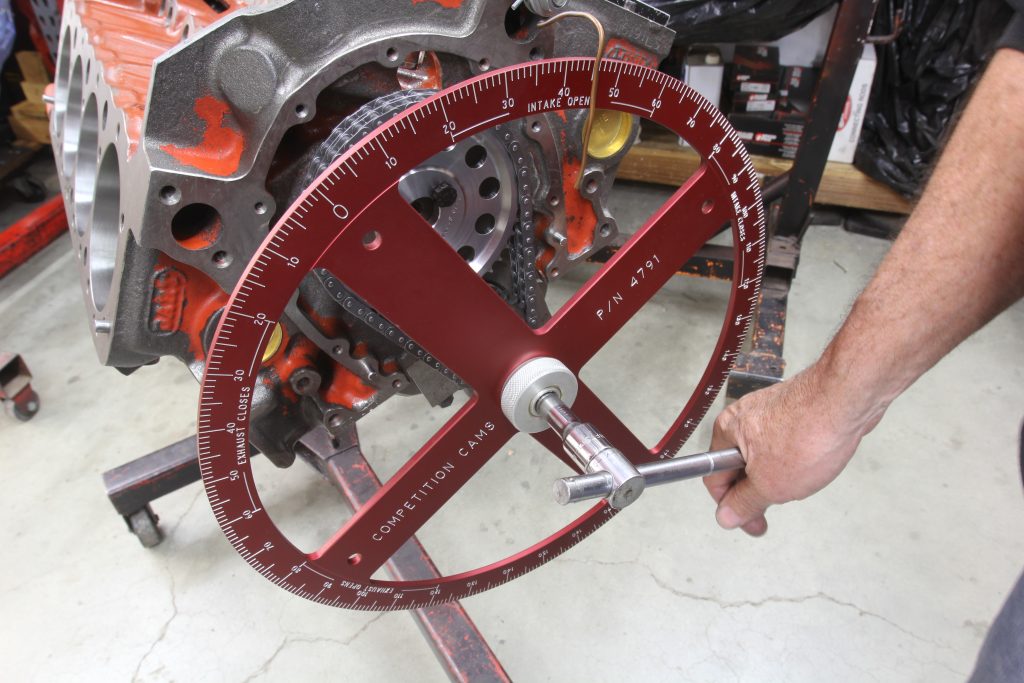Can you determine the intake centerline from reading the cam specs with the intake opening and intake closing figures listed on the cam card? Example: I have a Crane Cams hydraulic roller for a small block Chevy that gives all of the cam specs, but it doesn’t list the intake centerline. Is there a way for me to know if the cam has any advance ground into it before I install it and degree it? Thanks much.
T.G.
This is a great question and, for once, it has a relatively simple answer. I will use a small block Chevy cam for our example and we will use its advertised duration opening and closing points. We’ve listed the numbers in the accompanying chart to reference them easier.
| Cam specs for a generic small block Chevy using 0.006 inch tappet checking point for advertised duration. | ||||
| Intake Opening | 31° BTDC | Exhaust Opening | 77° BTDC | |
| Intake Closing | 63° ABDC | Exhaust Closing | 29° ABDC | |
Let’s start by calculating advertised duration. This is easy because all we do is add intake opening (31 degrees BTDC) + 180 degrees + intake closing (63 degrees ABDC) = 274 degrees. This is the intake lobe’s advertised duration.
Now to determine the intake centerline, all we have to do is divide duration in half and subtract the intake opening position.
274 / 2 = 137 – 31 = 106 Degrees Intake Centerline
That is your intake centerline—assuming that the cam manufacturer did not advance the cam when grinding the lobes. One way we can check this is to determine the lobe separation angle (LSA). That should be listed on the cam card but just for fun, let’s run through how to determine the exhaust lobe centerline so we can compute the LSA.
Determining exhaust duration is similar to the intake:
77 BTDC + 180 + 29 ABDC = 286 degrees advertised duration
With the exhaust duration at 286 degrees, divide it in half and subtract the exhaust closing number of 29 degrees.
286 / 2 = 143 – 29 = 114 Degrees Exhaust Centerline.
Now if we add the intake and exhaust centerlines together and divide by 2, this will generate the lobe separation angle (LSA).
106 Intake centerline + 114 degrees of Exhaust Centerline = 220 / 2 = 110 degree LSA.
When comparing the LSA to the intake centerline, we can see that the camshaft has been advanced by four degrees at 106 compared to the LSA of 110 degrees.
This procedure can be helpful for working on an engine with an unknown camshaft. Just measure the opening and closing points with a dial indicator on the lifter and a camshaft degree wheel and then you can compute the rest of the information with these simple formulas. The biggest issue is accuracy at 0.006 inch of lobe lift. But otherwise it should be fairly straight forward effort. Of course, you can also use the lift numbers at 0.050 inch tappet lift if you want. The process is the same either way.
This is just another way to get to geek out on camshafts!


Comments